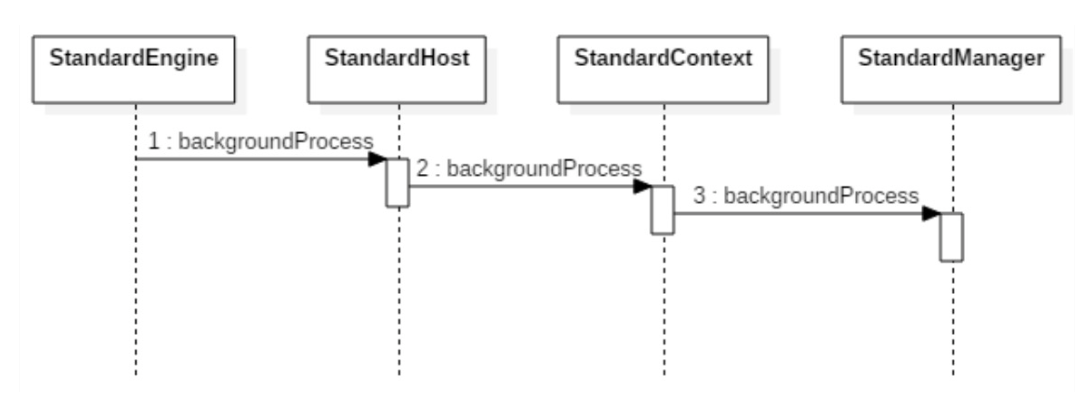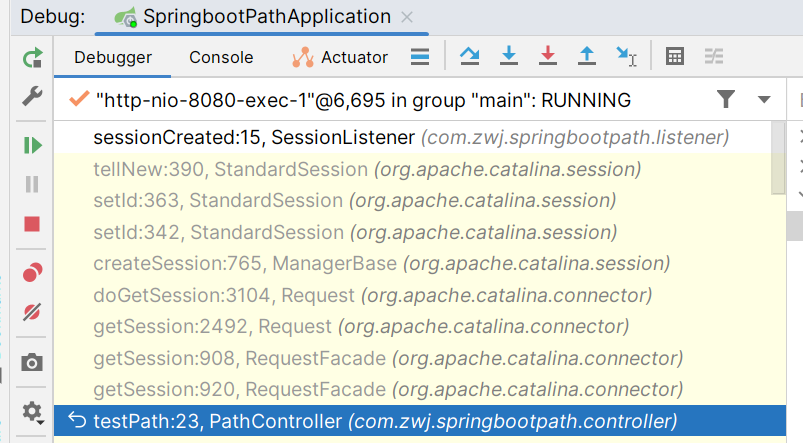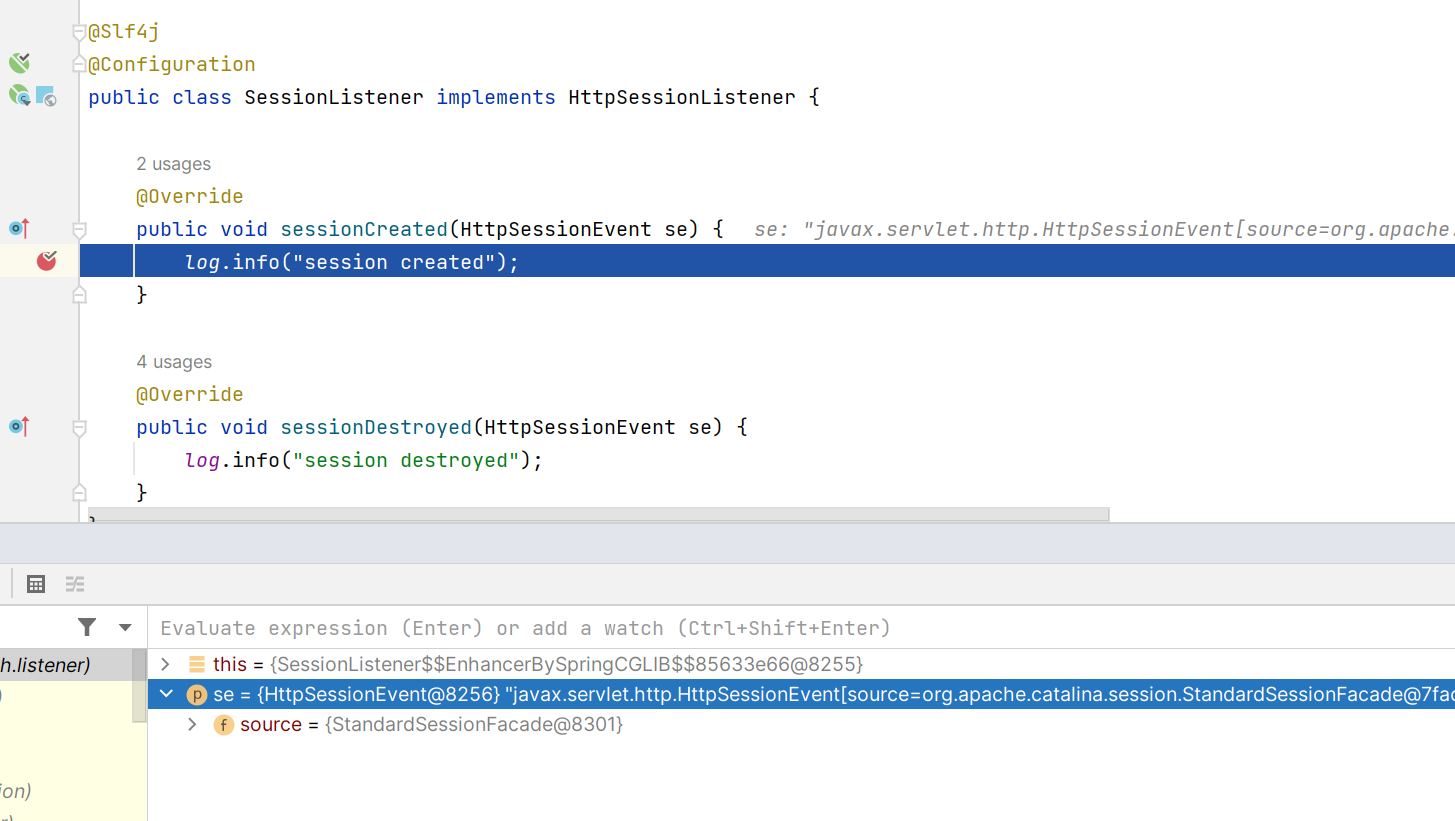Tomcat 如何管理 Session
Tomcat 如何管理 Session
我们知道,Tomcat 中每一个 Context 容器对应一个 Web 应用,而 Web 应用之间的 Session 应该是独立的,因此 Session 的管理肯定是 Context 级的,也就是一个 Context 一定关联多个 Session。
Tomcat 中主要由每个 Context 容器内的一个 Manager 对象来管理 Session。抽象实现类是 ManagerBase,默认实现类为 StandardManager。
查看 org.apache.catalina.Manager 的接口(省略部分):
public interface Manager {
public Context getContext();
public void setContext(Context context);
public void add(Session session);
public void changeSessionId(Session session);
public void changeSessionId(Session session, String newId);
public Session createEmptySession();
public Session createSession(String sessionId);
public Session findSession(String id) throws IOException;
public Session[] findSessions();
public void load() throws ClassNotFoundException, IOException;
public void remove(Session session);
public void remove(Session session, boolean update);
public void unload() throws IOException;
public void backgroundProcess();
}
其中就有创建和删除 Session 的接口,其中的 load 和 reload 是将 session 在存储介质中 保存/卸载。
Session 的创建
查看 Manager 的抽象实现类 org.apache.catalina.session.ManagerBase
public abstract class ManagerBase extends LifecycleMBeanBase implements Manager {
/**
* The Context with which this Manager is associated.
*/
private Context context;
/**
* The set of currently active Sessions for this Manager, keyed by
* session identifier.
*/
protected Map<String, Session> sessions = new ConcurrentHashMap<>();
}
其中有两个关键属性如上所示:一个是与该对象关联的 Context 对象,一个是存放 session 的一个 Map。
StandardManager 继承了 ManagerBase,直接复用了它的创建方法
public Session createSession(String sessionId) {
// 首先判断 Session 数量是不是到了最大值,最大 Session 数可以通过参数设置
if ((maxActiveSessions >= 0) &&
(getActiveSessions() >= maxActiveSessions)) {
rejectedSessions++;
throw new TooManyActiveSessionsException(
sm.getString("managerBase.createSession.ise"),
maxActiveSessions);
}
// 复用或者创建一个 session 实例
Session session = createEmptySession();
// 初始化空 session 的属性值
session.setNew(true);
session.setValid(true);
session.setCreationTime(System.currentTimeMillis());
session.setMaxInactiveInterval(getContext().getSessionTimeout() * 60);
String id = sessionId;
if (id == null) {
id = generateSessionId();
}
// setId 将 session 保存到了 map 中
session.setId(id);
// 计数器加 1
sessionCounter++;
SessionTiming timing = new SessionTiming(session.getCreationTime(), 0);
synchronized (sessionCreationTiming) {
sessionCreationTiming.add(timing);
sessionCreationTiming.poll();
}
return session;
}
查看 setId() 方法
public void setId(String id, boolean notify) {
if ((this.id != null) && (manager != null)) {
manager.remove(this);
}
this.id = id;
if (manager != null) {
// 实现类里把 session put 到了 map 里
manager.add(this);
}
// 如果需要触发创建通知
if (notify) {
tellNew();
}
}
/**
* 通知监听器有关新会话的信息
*/
public void tellNew() {
// Notify interested session event listeners
fireSessionEvent(Session.SESSION_CREATED_EVENT, null);
// 获取 context 对象和 listener 对象
Context context = manager.getContext();
Object listeners[] = context.getApplicationLifecycleListeners();
if (listeners != null && listeners.length > 0) {
HttpSessionEvent event =
new HttpSessionEvent(getSession());
for (Object o : listeners) {
// 判断是否是 HttpSessionListener 的实例
if (!(o instanceof HttpSessionListener)) {
continue;
}
HttpSessionListener listener = (HttpSessionListener) o;
try {
context.fireContainerEvent("beforeSessionCreated", listener);
// 其实就是这个方法,我们只需要实现 HttpSessionListener 并注册 bean 就可以
listener.sessionCreated(event);
context.fireContainerEvent("afterSessionCreated", listener);
} catch (Throwable t) {
ExceptionUtils.handleThrowable(t);
try {
context.fireContainerEvent("afterSessionCreated", listener);
} catch (Exception e) {
// Ignore
}
manager.getContext().getLogger().error (sm.getString("standardSession.sessionEvent"), t);
}
}
}
}
Session 的清理
容器组件会开启一个 ContainerBackgroundProcessor 后台线程,调用自己以及子容器的 backgroundProcess 进行一些后台逻辑的处理,和 Lifecycle 一样,这个动作也是具有传递性的,也就是说子容器还会把这个动作传递给自己的子容器。

StandardContext 重写了该方法,它会调用 StandardManager 的 backgroundProcess 进而完成 Session 的清理工作,下面是 StandardManager 的 backgroundProcess 方法的代码:
public void backgroundProcess() {
// processExpiresFrequency 默认值为 6,而 backgroundProcess 默认每隔 10s 调用一次,也就是说除了任务执行的耗时,每隔 60s 执行一次
count = (count + 1) % processExpiresFrequency;
if (count == 0)
// 默认每隔 60s 执行一次 Session 清理
processExpires();
}
/**
* 单线程处理,不存在线程安全问题
*/
public void processExpires() {
// 获取所有的 Session
Session sessions[] = findSessions();
int expireHere = 0 ;
for (int i = 0; i < sessions.length; i++) {
// Session 的过期是在 isValid() 方法里处理的
if (sessions[i]!=null && !sessions[i].isValid()) {
expireHere++;
}
}
}
既然 session 的创建会有事件通知,那么 session 的清理肯定也有

查看 HttpSessionListener:
public interface HttpSessionListener extends EventListener {
/**
* Notification that a session was created.
* The default implementation is a NO-OP.
*
* @param se
* the notification event
*/
public default void sessionCreated(HttpSessionEvent se) {
}
/**
* Notification that a session is about to be invalidated.
* The default implementation is a NO-OP.
*
* @param se
* the notification event
*/
public default void sessionDestroyed(HttpSessionEvent se) {
}
}
这两个方法分别在 session 创建和销毁时被调用
实践
@RestController
@RequestMapping("/path")
@Slf4j
public class PathController {
@GetMapping("/test/{strs}")
public void testPath(@PathVariable("strs") String strs, HttpServletRequest request) {
HttpSession session = request.getSession();
log.info("接收到的strs值为:{}", strs);
}
}
@Slf4j
@Configuration
public class SessionListener implements HttpSessionListener {
@Override
public void sessionCreated(HttpSessionEvent se) {
log.info("session created");
}
@Override
public void sessionDestroyed(HttpSessionEvent se) {
log.info("session destroyed");
}
}
进行 Debug:

curl localhost:8080/path/test/111
调用栈如图:

解释下调用栈:
-
我们拿到的是一个 RequestFacade 类的对象,这个对象其实是真正 request 的包装类,构造器如下:
-
public RequestFacade(Request request) { this.request = request; } -
在包装类里,我们调用了内部的 getSession(),省略非关键代码,最后调用了内部 request 的 getSession
-
public HttpSession getSession() { return getSession(true); } -
public HttpSession getSession(boolean create) { if (SecurityUtil.isPackageProtectionEnabled()){ return AccessController. doPrivileged(new GetSessionPrivilegedAction(create)); } else { // 调用了内部 request 的 getSession return request.getSession(create); } } -
在 request 的 getSession 中,取到了 context 和 manager 对象,开始走目录1中 session 创建的逻辑
-
protected Session doGetSession(boolean create) { // There cannot be a session if no context has been assigned yet Context context = getContext(); // Return the requested session if it exists and is valid Manager manager = context.getManager(); -
// Create a new session if requested and the response is not committed if (!create) { return null; } // Re-use session IDs provided by the client in very limited // circumstances. String sessionId = getRequestedSessionId(); // 这个方法走到了 ManagerBase 的 createSession ,也就是目录1中介绍过的函数 session = manager.createSession(sessionId); session.access(); return session; } -
最终进行 session 创建完成的通知
-

另外,我们拿到的 session 其实也是一个包装类,包装类的好处是对外界封闭细节,避免暴露过多的内部实现,防止外界进行危险操作,例如这里我们假如把 session 强转为 StandardSession,就会出现类型转换的错误。如下:
@GetMapping("/test/{strs}")
public void testPath(@PathVariable("strs") String strs, HttpServletRequest request) {
HttpSession session = request.getSession();
// 强转为 StandardSession
StandardSession standardSession = (StandardSession) session;
// 拿到 manager 对象,多造几个 session
Manager manager = standardSession.getManager();
manager.createSession("1111");
manager.createSession("2222");
log.info("接收到的strs值为:{}", strs);
}
报错信息:

参考资料
【1】https://zhuanlan.zhihu.com/p/138791035
【2】https://time.geekbang.org/column/article/109635
原文地址:https://blog.csdn.net/qq_56517253/article/details/143879034
免责声明:本站文章内容转载自网络资源,如本站内容侵犯了原著者的合法权益,可联系本站删除。更多内容请关注自学内容网(zxcms.com)!
